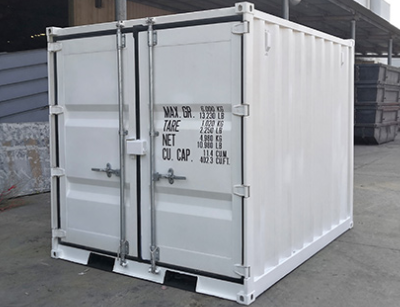There are usually three methods for Customized Shipping Container, that is, all boxes are packed manually. Move the forklift (forklift) into the box, and then use manpower and machinery to pack it, such as a pallet (pallet) cargo forklift. In any case, when the goods are packed, the weight of the goods in the box shall not exceed the upper limit of the container loading capacity, that is, the total weight of the container minus the self-weight income of the container. Generally speaking, the total weight and self weight will be marked on the door of the container. The unit weight of each container is fixed, so when the same cargo is loaded in the container, as long as you know the density of the cargo, you can determine whether it is heavy or light. When loading, the load at the bottom of the box should be balanced, especially the center of gravity of the load should not be biased to one end.

Avoid concentrated loads. If heavy goods such as machinery and equipment are loaded, the bottom of the box should be paved with wood boards and other cushioning materials to spread the load as much as possible. When using manual loading, pay attention to whether there are loading and unloading instructions on the packaging such as not upside down, flat, and vertical. Be sure to use loading tools correctly, and it is forbidden to use hand hooks to pack goods. When loading pallets, the internal dimensions of the container and the external dimensions of the cargo packaging should be accurately grasped to calculate the number of loaded pieces to minimize abandonment. The purpose of multi-loading goods. When the forklift is packed, it is limited by the free lifting height of the machine and the height of the mast. Therefore, when conditions permit, the forklift can load two layers at a time, but there should be a certain gap between the upper and lower sides. In addition, it should also be noted that a skid should be laid under the goods so that the fork can be pulled out smoothly. Don't pack the goods naked, at least with packaging. Don't damage the goods blindly to save space. General goods will also be packed. Such as boilers and building materials, it will be more troublesome. They should be tied to prevent loosening.
The main concern during the packing process is the error of the cargo data. The goods are damaged and the data is inconsistent with the customs declaration data, resulting in the customs not releasing the goods. Therefore, before packing, the consignor. storehouse. Freight forwarders need to be well coordinated to avoid this.
1. Goods of different shapes and different packages should not be packed together as much as possible.
2. Dust, liquid, moisture, smell and other goods will seep out of the package, try not to put them together with other goods. Use canvas, plastic sheeting, or other material to separate if you need to.
3. Light weight goods are placed on top of heavier goods.
4. Goods with weak packing strength should be placed on top of goods with strong packing strength.
5. Liquid goods and cleaning goods should be placed under other goods as much as possible.
6. Goods with sharp corners or protruding parts should be covered to avoid damage to other goods.




Comment
(0)